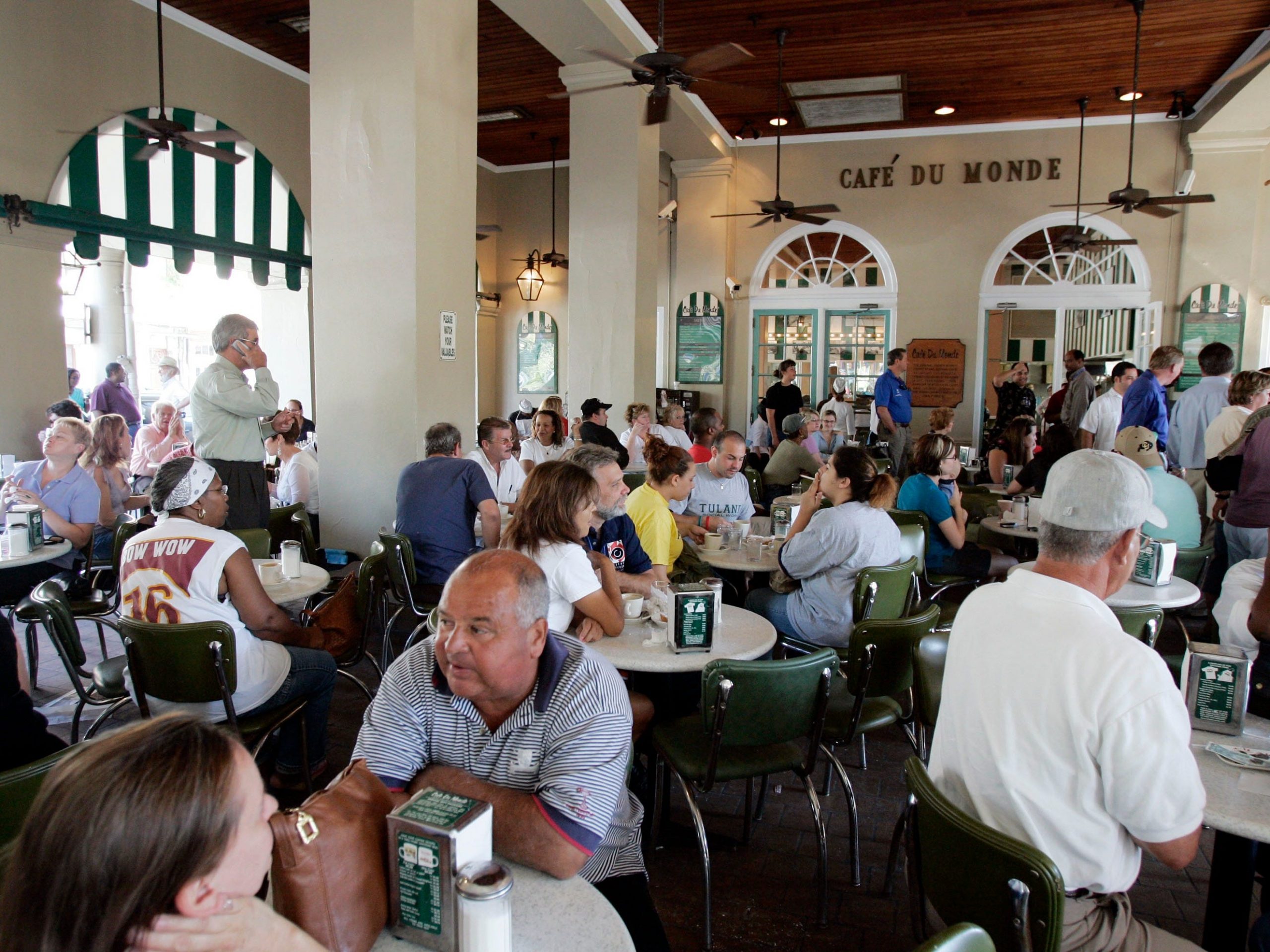- The restaurant industry is a central part of New Orleans’ identity.
- Exactly 15 years ago, the Louisiana city was hit hard by Hurricane Katrina in August 2005.
- With most of the city destroyed and underwater, recovery took years. But restaurant clean-up started a couple weeks after the storm hit, before evacuees even really returned to the city.
- Roughly 40% of the city’s restaurants managed to reopen within nine months of the storm. Some institutions, like legendary Cafe Du Monde, opened in October to packed houses before most of the city even had power.
- The city now faces another challenge as it braces for potential twin hurricanes amid the coronavirus pandemic, but the local dining scene is already familiar with rebuilding amid tragedy.
- Visit Business Insider’s homepage for more stories.
New Orleans, Louisiana, has long been a multicultural hub with French Creole roots and celebrations like Mardi Gras. The city’s historical center, the French Quarter, coupled with its famed Bourbon Street nightlife, have attracted visitors for years.

Source: The City of New Orleans
Before Hurricane Katrina, New Orleans attracted millions of tourists every year. In 2004, it welcomed 10.1 million visitors. That number dropped off to 3.7 million in 2006.

Source: Nola
The city’s restaurants have long been part of its draw, too. Some of New Orleans’ still-popular dining places were established in the 1800s. Before Hurricane Katrina, there were over 3,400 restaurants in New Orleans that employed 54,000 people.

Source: Industry Today, Nola
Hurricane Katrina made landfall in the Gulf Coast on August 29, 2005. This hurricane season marks the storm’s 15th anniversary. It is considered to be one of the most devastating natural disasters in US history.

Source: Business Insider, National Hurricane Center
The city, which is surrounded by water, was equipped with levees to prevent flooding. The storm broke those levees and ravaged New Orleans, causing 80% of the city to flood, with some parts under 15 feet of water. An estimated 1,833 people are said to have died in the metropolitan area.

Source: Business Insider, National Hurricane Center, UNC-Charlotte
The city's restaurants, like almost everything else, were decimated. Clean-up of the iconic French Quarter began in mid-September, about two weeks after the hurricane hit, but the city faced major obstacles.

Source: Nola, Vice, Industry Today
At first, owners were unable to get into their restaurants — and in many cases, even into the city — for weeks to assess the damages.

Source: Nola, Industry Today
Structural damage and displaced workers slowed the process. After weeks without power, the first order of business in restaurants was not only cleaning debris, but also discarding buckets upon buckets of spoiled food.

Source: Industry Today, The New York Times
Clean-up crews wore protective gear and masks as they emptied French Quarter restaurants — the most popular among tourists — of everything down to contaminated bottles of wine.

Source: The New York Times, US News
Even a month after the hurricane, only 17% of the city had power. The community rallied together in many ways — one being propane-powered, street-side kitchens that provided red beans and rice to clean-up crews and National Guardsmen.

Source: Associated Press
As local chef Susan Spicer told The New York Times, "people realized that restaurants were more than just places to go eat" in the aftermath of Katrina. "They are culture bearers and community gathering places."

Source: The New York Times
Institutional mainstays like beignet legend Cafe Du Monde opened as early as October to packed houses. At the time, Councilwoman Jacquelyn Brechtel Clarkson said, "It makes a huge statement for the city of New Orleans: We're open for business, come visit us."

Source: Associated Press
Within nine months, roughly 41% of the restaurants in the metropolitan area had reopened. However, it took the city's tourism scene a decade to rebound from Katrina: It welcomed pre-Katrina levels of visitors in 2016. Its restaurants are still one of the city's largest draws — New Orleans has scores of James Beard Award recipients.

Source: City of New Orleans, Industry Today
The coronavirus pandemic presents a similar problem for New Orleans. Layoffs and lower capacities are taking a toll on local restaurants. Two tropical storms are headed for the Gulf Coast now, too, threatening damage. But the city already knows how to rebuild.

Source: The New York Times, Insider
Donald Link, a chef with six New Orleans restaurants, told the New York Times he's had to lay off 360 of his 450 employees. He left just one restaurant, Cochon Butcher, open with a menu that samples from all six restaurants. He and his small staff also cook for former colleagues, "but we can't get too big, because I can't put too many people in the kitchen."

Source: The New York Times
Brad Hollingsworth, the owner of Clancy's restaurant, told The New York Times that he imagines recovery will look similar to the recovery after Katrina. "In 45 years in the restaurant business, I'd never seen anything like it," Hollingsworth said. "People just loved being here, seeing their friends again, getting out, getting back home."

Source: The New York Times

